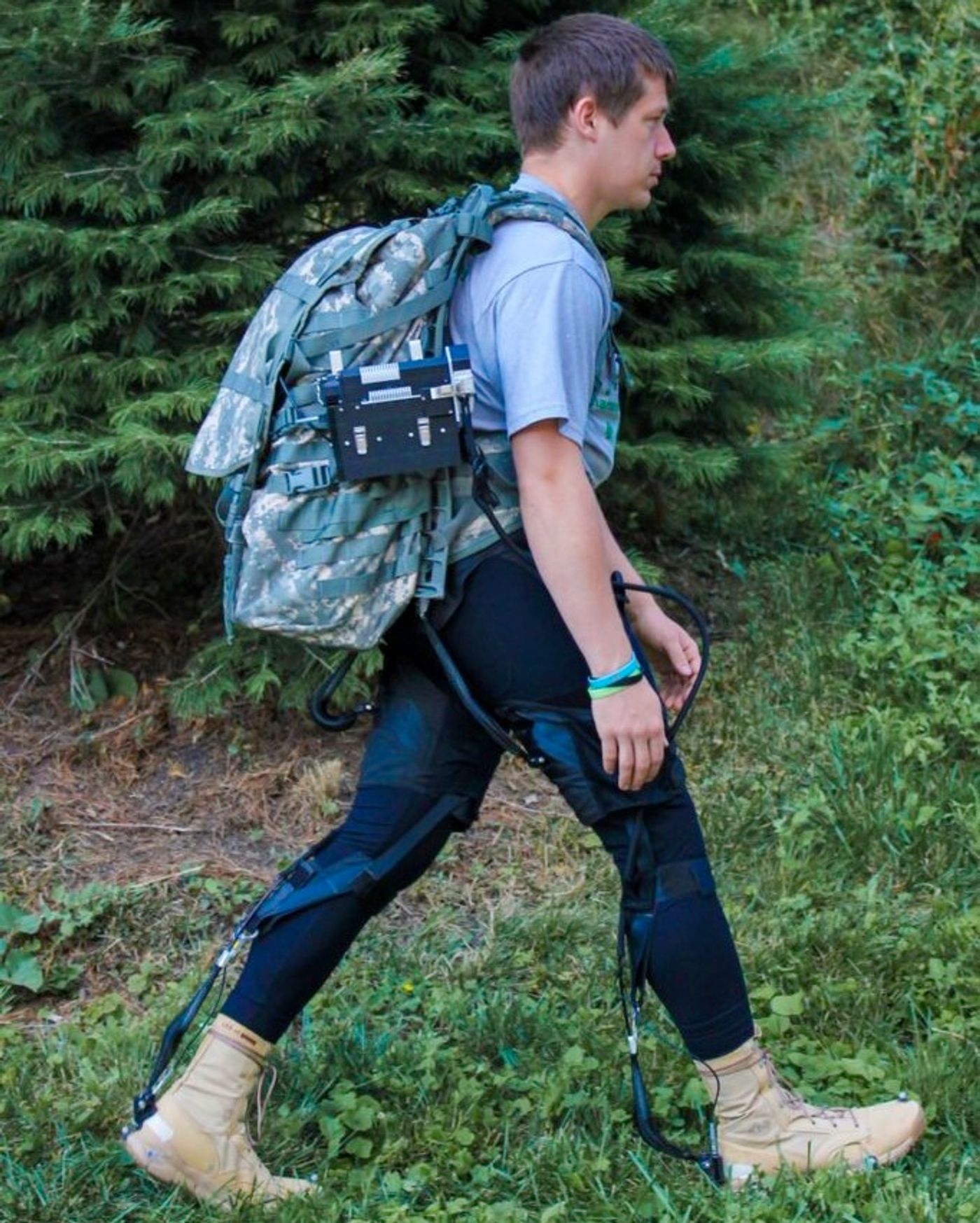Scientists at Harvard University have developed an exosuit that reduces energy expenditure when carrying heavy loads. The accompanying
study, published in the Journal of NeuroEngineering and Rehabilitation, reports that the work done by ankle, knee and hip joints was significantly reduced without having an impact on gait. The joints actually moved in the way they do when no load is being carried, suggesting the suit has no effect on the wearers’ freedom of movement and instead allows the wearer to move as they would when they were not carrying a burden.
Instead of a rigid exoskeleton, textiles were used to make the exosuit to make it more comfortable and natural to wear. It has a waist belt with two thigh pieces and two calf straps, connected by cable to two backpack motors. The cables act to transmit energy from the motor to the suit and by extension, the wearer. The suit is made to detect a walking motion and then become active to assist the hip and ankle joints. Combined, those joints contribute about 80% of the power produced by leg joints during walking.
The researchers posited that it would also be important for a device that aids walking with loads to also carry its own weight, so even though the wearer has the extra burden of the exosuit itself, there would be a reduction in the overall metabolic cost of walking.
To be sure, the researchers wanted to test the exosuit under three conditions - unpowered while carrying a backpack, powered while carrying a backpack, and turned off with no extra backpack as the baseline. They then use several parameters for measurements - the participants’ kinetics (forces influencing body movements), kinematics (movements of joints and muscles) and metabolism.
They had seven healthy, experienced load carriers walk on a treadmill with a constant speed of 1.5 meters per second while carrying a load weighing 30% of their body mass. It was found that the exosuit did indeed reduce the amount of energy consumed while walking with weight, by 7.3% on average.
Conor Walsh, one of the authors and the founder of the Harvard Biodesign Lab, said: “Our results demonstrate for the first time that an autonomous soft exosuit can reduce the energy expenditure experienced by load carriers, possibly enhancing their overall gait performance.” He continued, “Apart from assisting load carriers, we are exploring how the soft exosuit can be used to assist individuals with impaired movement, paving the way for the use of this technology in a wide range of people.” This device may also benefit those who frequently carry heavy cargo, such as first responders, soldiers or hikers, according to the developers.
Sources:
The Journal of NeuroEngineering and Rehabilitation,
Biomed Central









